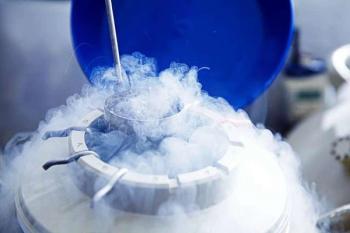
Gender-affirming surgery rates rising in the United States
In a recent study, a rise in the prevalence of gender-affirming procedures in the United States was observed.
According to a recent study published in JAMA Network Open, rising rates of gender-affirming surgery (GAS) have been reported in the United States.
Gender dysphoria, defined as, “an incongruence between an individual’s experienced or expressed gender and the gender that was assigned at birth,” may be treated through hormonal therapy, behavioral therapy, and GAS. GAS is described as procedures which help a person’s physical appearance associate with their gender.
Types of GAS mainly discussed include facial and cosmetic procedures, breast and chest surgery, and genital reconstructive surgery. These procedures have been indicated to improve patient quality of life and reduce gender dysphoria, along with potentially decreasing anxiety and depression.
Positive results of GAS have led to increased rates of GAS in the United States. However, there is little information on inpatient and outpatient GAS estimates. Investigators conducted a study to evaluate GAS trends in the United States.
Data was obtained from the Nationwide Ambulatory Surgery Sample (NASS) and the National Inpatient Sample (NIS). NASS contains data from almost 2800 hospital-owned facilities across up to 35 states, while NIS contains data from about 20% of inpatient hospital encounters within community hospitals throughout 48 states.
Patients with International Statistical Classification of Diseases and Related Health Problems, Tenth Revision (ICD-10) diagnosis codes for gender identity disorder were selected regardless of age. Investigators evaluated NASS and NIS data of selected patients, then assessed GAS encounters.
GAS was determined using ICD-10 codes, then divided into classifications including breast reconstruction, genital reconstructive procedures, and facial and cosmetic procedures. The number of procedures and procedure distribution were measured in each procedural group.
Patient sex was reported as male, female, missing, or inconsistent. Covariates included age at surgery, year of procedure, primary insurance coverage, race and ethnicity, and hospital teaching status, rural location, and bed size.
There were 48,019 patients who received GAS evaluated, 52.3% of which were aged 19 to 30 years, 21.8% 31 to 40 years, and 7.7% aged 12 to 18 years. Private insurance was seen in 60.5% of patients, Medicaid in 25.3%, depression in 15%, and treatment at an urban hospital in 88.4%.
In 2016, 13,855 health system encounters for gender identity disorder were reported. This number rose to 38,470 in 2020. A rise in GAS rates among encounters with a billing code for gender identity disorder was also reported, from 32.9% in 2016 to 37.1% in 2019. This rate decreased to 33.3% in 2020.
Of hospital admissions for gender identity disorder, 11.8% were for GAS. Gender-affirming procedures were also reported as 80.3% of ambulatory surgical procedures. The most common procedure type was breast and chest procedures in 56.6% of patients, followed by genital reconstruction in 35.1% of patients and facial and cosmetic procedures in 13.9%.
Breast reconstruction was the most common individual procedure, reported in 44.2% of patients. Hysterectomy was the most common genital reconstruction procedure in 9.3% of patients, while liposuction was the most common facial or cosmetic procedure in 6.1%.
Patients aged 19 to 30 years had the greatest number of procedures, followed by those aged 31 to 40 years and those aged 41 to 50 years. Breast and chest surgical procedures, genital surgical procedures, and facial and other cosmetic procedures were all most common in patients aged 19 to 30 years.
These results indicated rising trends in GAS, showing a greater need for clinicians knowledgeable in transgender care. Investigators concluded delivering gender-affirming care will be difficult as some states restrict gender-affirming services.
Reference
Wright JD, Chen L, Suzuki Y, Matsuo K, Hershman DL. National estimates of gender-affirming surgery in the US. JAMA Netw Open. 2023;6(8):e2330348. doi:10.1001/jamanetworkopen.2023.30348
Newsletter
Get the latest clinical updates, case studies, and expert commentary in obstetric and gynecologic care. Sign up now to stay informed.
















